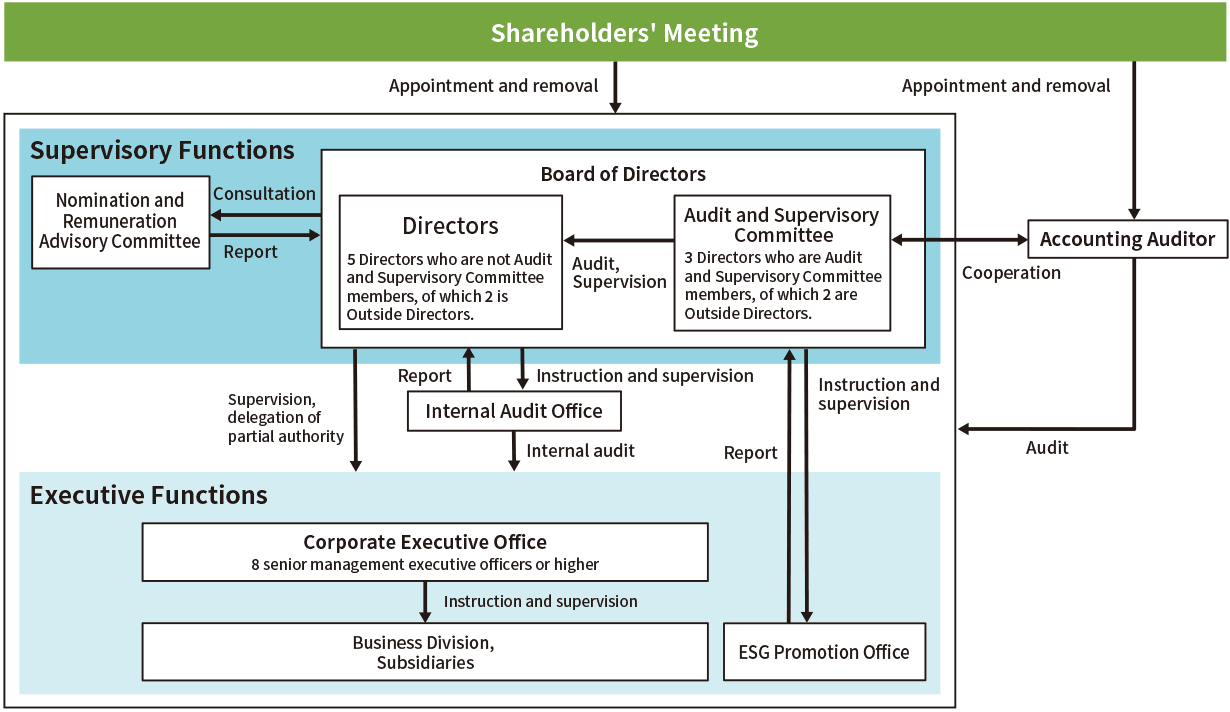Environment
Initiatives to combat climate change (information disclosure based on TCFD recommendations)
Environmental Policy
CyberAgent recognizes climate change as one of its key management challenges and is committed to reducing its environmental impact and improving the efficiency of its business activities as a company that strives to help realize a sustainable society.
We will continue to monitor and work to reduce greenhouse gas emissions from our business operations, to establish and operate the necessary systems, and to disclose relevant information.
Governance
Aiming to respond in line with the TCFD recommendations, companywide cross-functional members and the ESG promotion office play a central role in analyzing climate change-related risks and opportunities through scenario analysis, considering countermeasures, and reporting regularly to the Board of Directors.
Structure

Risks and countermeasures based on scenario analysis
The following table summarizes the impact on business performance of the major risks identified and considered through scenario analysis.
For the scenario analysis, the two scenarios below were selected based on referenceable climate change scenarios.
- 2℃ scenario
-
This scenario assumes that global policy measures and technological innovations will advance to keep the average temperature rise below 2℃ by the end of the century, that social changes associated with the transition to a decarbonized society will have an impact on business, and that we will live in a society where transition risks and opportunities are apparent.
- 4℃ scenario
-
If no action is taken to address climate change, average temperatures will rise by about 4℃ by the end of the century. This scenario assumes a society in which increased natural disasters due to rising temperatures, etc., are likely to impact business, and physical risks and opportunities will materialize.
Summary
| Climate change risks | Measures | Financial impact |
|---|---|---|
| Office and data center power disruptions caused by flooding, energy conservation and power outages. | Choose offices and data centers with high disaster resilience and diversify locations. | High |
| Increase in electricity costs due to business growth or high demand for renewable energy. | Implement energy-saving measures in the offices and data centers. | Medium |
| Increase in carbon credit price. | Implement energy-saving measures and switch to renewable energy in the offices and data centers to reduce CO2 emissions. | Low |
| Carbon tax burden and tax rates rise. | Low | |
| Reputational damage due to inadequate response to climate change. | Build trust by calculating CO2 emissions accurately and disclosing information appropriately. | Low |
Risk management
We strive to identify physical risks such as extreme weather and flooding caused by climate change, develop BCP plans, and ensure widespread familiarization with manuals. The ESG promotion office also reports regularly to the Board of Directors on risks and measures related to climate change. It also monitors and assesses risks and disclosures related to climate change through internal audits.